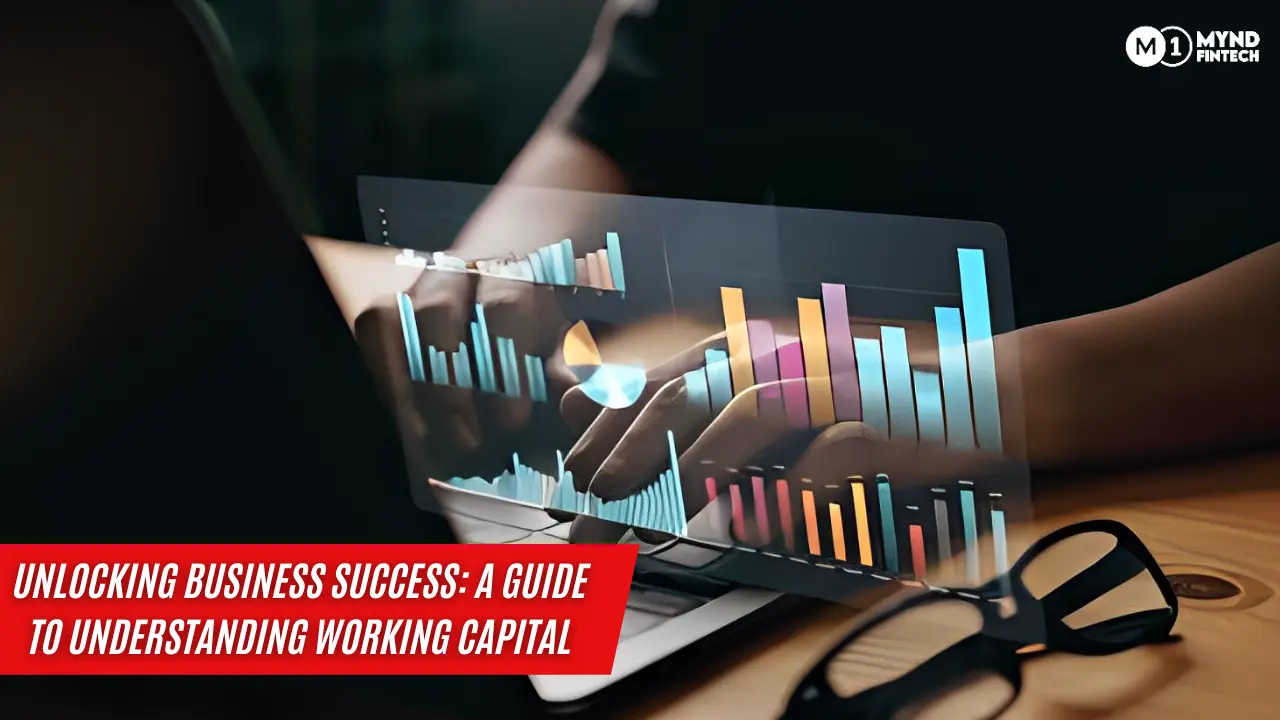In the fast-paced business world, “working capital” is crucial. It’s like the lifeblood that keeps a business going by providing the money needed for everyday activities. Simply put, it’s the difference between what a company owns now and what it owes. For several years, Mynd Fintech has been offering several working capital solutions to its customers across the country. This article is designed to help you better understand this subject matter.
Why does working capital matter? Managing it well is essential for achieving and sustaining business success. It directly affects a company’s ability to handle short-term responsibilities, invest in growth, and navigate economic uncertainties. Essentially, well-handled working capital is key to building a strong and successful business.
Economic Factors
Inflation, the rise in the general price level of goods and services, plays a pivotal role in shaping a company’s working capital dynamics. As prices increase over time, the purchasing power of money diminishes.
Navigating the challenges posed by inflation requires a keen understanding of its impact on working capital and strategic planning to maintain financial stability.
- Interest Rates and Their Influence on Borrowing Costs
Interest rates are a critical factor influencing a company’s cost of capital and, consequently, its working capital management.
By monitoring interest rate trends, businesses can make informed decisions regarding financing options and optimize their working capital structure.
- Economic Cycles and Their Effect on Cash Flow
Economic cycles, characterized by periods of expansion and contraction, have a direct impact on a company’s cash flow. During economic downturns:
- Decreased Sales: Businesses may experience a decline in sales, affecting cash inflows.
- Tightened Credit: The availability of credit may diminish, impacting the ability to manage accounts receivable effectively.
Operational Efficiency
- Inventory Management and Its Role in Working Capital
Effective inventory management is a linchpin in optimizing working capital, balancing the need to meet customer demand with the imperative to control costs. Two key strategies in this regard are:
- Just-in-Time (JIT) Inventory
Just-in-time (JIT) inventory is a system where goods are produced or acquired precisely when they are needed in the production process or to fulfill customer orders. JIT minimizes the need for excessive inventory, freeing up working capital that might otherwise be tied up in storage costs. It enhances efficiency by reducing carrying costs and the risk of obsolete inventory.
- EOQ (Economic Order Quantity) Considerations
Economic Order Quantity (EOQ) is the optimal order quantity that minimizes total inventory holding costs and ordering costs. Calculating the EOQ helps strike a balance between ordering costs and holding costs. By optimizing order quantities, businesses can ensure that their working capital is used efficiently, avoiding excess holding costs while meeting demand.
Strategic inventory management not only ensures the availability of goods but also contributes significantly to working capital efficiency.
Join us in the next segment as we explore additional facets of operational efficiency and their impact on working capital, providing you with actionable insights to enhance your business operations.
- Accounts Receivable Management
Managing accounts receivable is a crucial aspect of working capital optimization, ensuring a steady inflow of cash. Two key considerations in this realm are:
- Days Sales Outstanding (DSO)
Days Sales Outstanding (DSO) is a metric that measures the average number of days it takes for a company to collect payment after a sale has been made. Monitoring DSO is essential for gauging the efficiency of the accounts receivable process. A lower DSO indicates quicker cash conversion and a healthier working capital position. So what happens if you have a high DSO and need working capital to sustain your operations? Quite simply, you can use your outstanding receivables and raise funds against them. This process is called Factoring, which is one of the services that Mynd Fintech provides to its customers.
- Credit Policies and Terms
Establishing clear credit policies and terms is vital for managing the risk associated with credit sales. This includes defining credit limits, payment terms, and penalties for late payments. Well-defined credit policies help strike a balance between attracting customers and ensuring timely cash flow. They contribute to a predictable and steady stream of incoming funds, positively impacting working capital.
Vendor and Supplier Relationships
Efficient management of vendor and supplier relationships is a cornerstone of working capital optimization. Let’s explore key considerations in this domain:
- Negotiating Favorable Payment Terms
Negotiating payment terms with vendors is a strategic move to align outgoing payments with incoming cash flows. Extending payment terms can provide a cushion for managing working capital effectively.
- Supplier Credit and Its Impact on Working Capital
Establishing mutually beneficial credit terms with suppliers can enhance cash flow management. Longer payment windows allow businesses to utilize available cash for other operational needs.
So what happens if you have negotiated a credit term with your principal for an extended period but still need payments against your invoices so that you can keep your business operationally running? Mynd Fintech offers several solutions to vendors such as Dynamic Bill Discounting and Invoice Discounting
- Strategic Partnerships for Better Procurement Terms
Building strategic partnerships with suppliers can lead to preferential procurement terms, bulk discounts, or extended credit periods. Such collaborations contribute to improved working capital efficiency.
Market Demand and Seasonality
Understanding and navigating market demand fluctuations and seasonality is pivotal for effective working capital management. Let’s explore key considerations:
- Understanding Demand Fluctuations
Scrutinizing historical data and market trends helps businesses comprehend demand fluctuations. This insight enables proactive adjustments in inventory levels and production schedules.
- Preparing for Seasonal Variations
For businesses affected by seasonal shifts, preparation is key. Anticipating increased demand during specific times allows for strategic inventory management and staffing adjustments.
- Forecasting Methods to Predict Market Trends
Leveraging advanced forecasting methods, such as data analytics and predictive modeling, empowers businesses to foresee market trends. Accurate predictions enable precise adjustments to working capital strategies.
Technology and Automation
In the era of digital transformation, technology plays a pivotal role in optimizing working capital. Let’s delve into the intersection of technology and financial efficiency:
- Role of Technology in Optimizing Working Capital
Technology enables seamless integration of financial data, providing real-time insights into working capital metrics. This integration facilitates informed decision-making and enhances overall financial visibility.
- Automation in Financial Processes
Automating routine financial tasks, such as invoicing and reconciliation, reduces the risk of errors and accelerates processes. This efficiency contributes to timely financial transactions and working capital optimization.
At Mynd Fintech, our entire processes are digitally enabled allowing our customers to have a seamless experience right from the onboarding process to receiving of their money.
- Implementing Efficient Cash Management Systems
Using advanced cash management systems helps businesses control cash flows more effectively. These systems simplify payments, improve forecasting of available funds, and aid in strategic decision-making. As we examine the connection between market changes and technological progress in managing working capital, it’s clear that staying ahead involves strategic planning and adopting the latest tools. Join us in the final section, where we summarize important points and offer practical insights to unlock your business’s full potential.
Conclusion
Recognizing this dynamic nature is the first step toward building resilience and adaptability into your business strategy. In conclusion, working capital is not merely a financial metric; it’s a strategic asset that propels businesses forward in the ever-evolving commerce landscape. Armed with a deeper understanding, you are better equipped to navigate the complexities of working capital management, with adaptability and foresight as your allies in maintaining a robust and responsive financial framework.
At Mynd Fintech, we’re committed to empowering businesses with cutting-edge solutions. Explore the possibilities with us and take your inventory management to new heights. Join us in reshaping the future of your business – embrace the Mynd Fintech advantage today!

